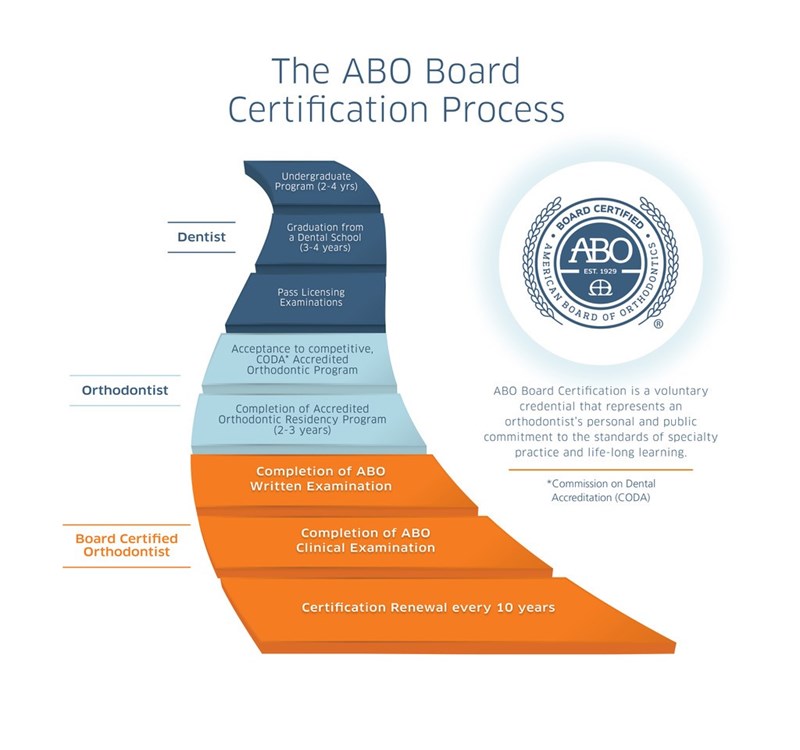Board Certified Orthodontist
Are All Orthodontists Board Certified?
Not all orthodontists are board-certified. While every orthodontist must be licensed to practice, fewer than half go on to achieve board certification. Board certification through the American Board of Orthodontics (ABO) is a significant milestone that goes beyond the two to three years of advanced education required to become an orthodontic specialist.
To earn this certification, orthodontists must present detailed case reports demonstrating their expertise in treating a wide range of patient cases. Additionally, they undergo a thorough interview by a panel of examiners to assess their clinical skills, knowledge, and judgment. Board certification is entirely voluntary, but it signifies a high level of dedication and accomplishment in orthodontic care.
How Many Certifying Boards Are Recognized by the ADA in Orthodontics?
There is only one certifying board in orthodontics recognized by the American Dental Association (ADA): the American Board of Orthodontics (ABO).
Established in 1929, the ABO is the oldest specialty board in dentistry. Its mission is to elevate the quality of orthodontic care through certification, education, and professional collaboration, promoting excellence across the profession.
Why Do Orthodontists Pursue Board Certification?
Board certification demonstrates an orthodontist’s commitment to the highest standards of patient care. By voluntarily undergoing the rigorous examination process, orthodontists show their dedication to:
- Staying current with the latest advances in orthodontics
- Delivering high-quality care to patients
- Upholding the standards of the orthodontic profession
Many orthodontists view board certification as a personal and professional achievement that reflects their dedication to excellence in their specialty.
What Does the ABO Certification Process Involve?
The ABO certification process has evolved since its founding in 1929 to reflect the growing demands of the specialty. Today, it includes the following steps:
- Written Examination: A comprehensive 240-question exam covering all areas of orthodontic knowledge. Passing this exam is the first step toward certification.
- Clinical Examination: Candidates submit detailed case reports from their practice or residency, demonstrating a history of exceptional patient care.
- Oral Examination: The case reports are reviewed by a panel of examiners, followed by a discussion of various academic and clinical topics to assess the candidate’s expertise.
Once all steps are completed, the orthodontist earns board certification for a limited time period. Certification must be renewed every 10 years through continued demonstration of high-quality patient care to maintain this status.
This certification reflects an orthodontist’s dedication to their craft and to providing the best care possible for their patients. Learn more about the American Board of Orthodontics.
